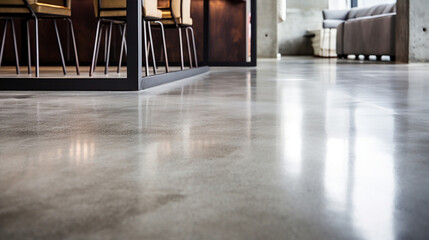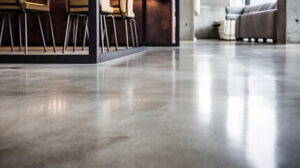Concrete Dallas is one of the most popular and versatile construction materials in use today. It is comprised of cement, coarse aggregate (sand or crushed rock fines) and water.
When making concrete, careful attention to proportions is important. For example, adding too much water will weaken the mix and cause it to become unworkable.

Concrete is the most used building material on earth. It is in our roads and sidewalks, the bridges that connect us to the places we need to go, and in houses, hospitals, schools and many other structures. In fact, concrete has become such a part of our everyday lives that it is easy to forget that it was once an experimental material that had to be carefully developed before it could take the form we now know as concrete.
The history of concrete starts in the 1700s when a bricklayer named John Smeaton combined a limestone-clay material with trass, a type of volcanic ash, to build a lighthouse that stood for over 100 years. Smeaton’s creation triggered other inventors to create more concrete-like materials and eventually modern concrete was invented.
To make concrete, a “binder” is needed that can hold aggregates together. Traditionally this has been a lime-based cement, but today a variety of cements and other binding agents are utilized. The most common types of concrete are made with cement that has been stabilized with a polymer such as asphalt or epoxy resin.
It was in the 1800s that concrete became truly viable as a construction material. A bricklayer from Leeds named Joseph Aspdin discovered that heating chalk and clay in a kiln produced an even better cement than previous crushed limestone cements. The new concrete was remarkably strong and durable and is still the basis for today’s concrete production.
The invention of the rotary kiln in 1885 allowed for more consistent temperature control, which improved the quality and strength of the finished product. This advancement, along with the advent of steel reinforcement in concrete, allowed for the building of larger and taller structures using concrete.
Mixing
Concrete is made by mixing aggregates, cement and water. The ratio of the components determines the consistency and strength of the final product. Incorrect mix ratios can weaken the material or make it difficult to work with and place. Mixing is the most critical step in producing high quality concrete.
The standard concrete mix ratio of one part cement, two parts sand and three parts coarse aggregate is suitable for most construction projects. However, some jobs require higher strength mixes and these are made by adjusting the ingredients. Chemical admixtures can also be used to modify the properties of the concrete.
Mixing times vary according to the type of mixer, the maximum aggregate size and the desired strength. For example, a high strength mix will need longer mixing times than a standard mix. The duration of mixing is also important because it determines the extent to which the materials are blended and homogeneous.
Dry mixing is the process of combining the different components before water is added. It can be done manually with a shovel or with a mechanical mixer. The latter is the preferred method because it is faster and more efficient and can be used to mix a wide variety of construction materials.
Another indicator of the efficiency of a mixer is the mixing energy, but this has been shown to be misleading if only macroscopic properties are considered. More accurate tests are needed to determine the homogeneity of a concrete mixture. One approach is to analyze the distribution of the various solid constituents (coarse and fine aggregates, mineral admixtures and cement paste) in samples taken from a mixer at different times during discharge. This compositional test has been recommended for standardization by RILEM.
Strength
Concrete strength is a key factor for determining whether or not it will be suitable for a specific construction project. Concrete strengths are measured in pounds per square inch (psi) and a higher PSI rating indicates that a particular concrete mix has greater strength properties. This is an important consideration when choosing the right concrete for a job, as it can have a significant impact on the final cost of a project.
The strength of concrete is determined by the amount of pressure that it can withstand under compression. Engineers typically use compressive testing to determine a concrete’s strength, measuring the force that will be required to crush a cylindrical sample of the material. This figure is then divided by the concrete’s surface area to produce a concrete strength value.
Although the compressive strength of concrete is relatively straightforward to measure, it’s harder to monitor the tensile and flexural strength of concrete in situ. In this case, the only way to do so is to drill holes into a concrete slab and extract a sample for testing in a laboratory. However, this is a destructive method of testing and carries with it the risk of damaging the integrity of the in-situ concrete structure.
Onsite monitoring of concrete strength is therefore a critical element for any construction project. Fortunately, new technology has made it possible to monitor the strength of in-situ concrete using wireless sensors that track hydration temperature history. This allows engineers to correlate test results from the Maturity test with the strength of field-cured cylinders tested in a lab.
While traditional concrete mixtures can achieve impressive compressive strengths, innovations such as Ultra-High Performance Concrete (UHPC) have pushed the boundaries of strength even further. This specialized concrete mixes cement, silica fume, fibers and superplasticizers in precise proportions to create a compact microstructure that contributes to its exceptional strength. Not only does UHPC have stronger tensile and flexural strengths than traditional concrete, but it also has a lighter weight, which can reduce footing and support requirements for structures.
Durability
Concrete is used in a wide range of structures exposed to a variety of environmental conditions and levels of mechanical loads. Durability refers to the ability of concrete to resist damage induced by these factors during its service life.
The durability of concrete is primarily related to its chemistry and porosity, rather than its compressive strength. The penetration of aggressive substances such as chloride ions, carbonation and sulfate ions, or leaching of mineral materials through the concrete microstructure is controlled by the size and connectivity of the pores and cracks.
A number of environmental factors affect the durability of concrete, including temperature fluctuations and freeze-thaw cycles, exposure to deicing salts and sulfates, and acid attacks. Designing concrete mixes that can withstand these factors and implementing proper construction techniques will help ensure the long-term performance of the structure.
In addition, the curing process is essential to achieving good durability in concrete. This includes ensuring that the concrete is kept at a stable temperature and moisture level, which will allow the cementitious materials to fully hydrate. Proper curing will also help reduce the risk of freezing and thawing, which can cause cracking and spalling.
The best way to ensure the durability of concrete is to use a high-quality, properly mixed mix. This means using the right amount of water and adding chemical admixtures, such as plasticizers and superplasticizers. Using these admixtures allows the concrete to flow and self-consolidate, which will make it less likely to crack or lose strength during placement and curing. It is also important to follow proper construction practices and use appropriate formwork and reinforcement. In addition, proper maintenance and repair can also enhance the durability of a concrete structure.
Applications
Concrete’s inherent durability and resistance to extreme weather conditions make it a critical building material for structures from bridges to dams. It also makes for a sound foundational alternative to wood in residential construction. Its fire-resistance and impenetrability deters pests like termites, allowing homeowners to save on energy costs and maintain their homes’ structural integrity.
When used in buildings, the cement-aggregate paste in which concrete is poured forms a durable, dense mass that resists seismic and wind forces, water penetration, and freezing temperatures. In addition to traditional concrete, many alternative materials have been used in the construction of buildings, including recycled glass, fly ash (a byproduct from coal combustion) and ground granulated blast-furnaces slag (GGBFS).
A key feature of concrete is its high thermal mass, which slows down the transmission of heat. Concrete’s natural insulating properties also reduce heating and cooling costs, making it an ideal choice for commercial building applications.
The low weight of concrete also contributes to its durability and ease of transport. For this reason, it is frequently used as a filler in road and runway construction. In some cases, concrete is precast and delivered to a construction site ready for installation. This reduces the time and labor needed for on-site mixing.
In many concrete applications, chemical admixtures are added to improve workability and performance. Plasticizers, such as lignosulfonate, increase the plasticity of concrete without changing the water-cement ratio. Air-entraining admixtures are used in high-strength concrete to promote better flow and minimize segregation and bleeding. Concrete pumpability is also improved by the use of superplasticizers, such as xylene.
During the curing process, calcium silicate hydrate (C-S-H) forms in concrete, adding to its strength and durability. In structures that will experience a lot of tensile stresses, such as beams and slabs, concrete can be made prestressed to counteract its tendencies to sag. In this form of concrete, steel tendons or bars are placed in the concrete before pouring to achieve the necessary stress distribution.


